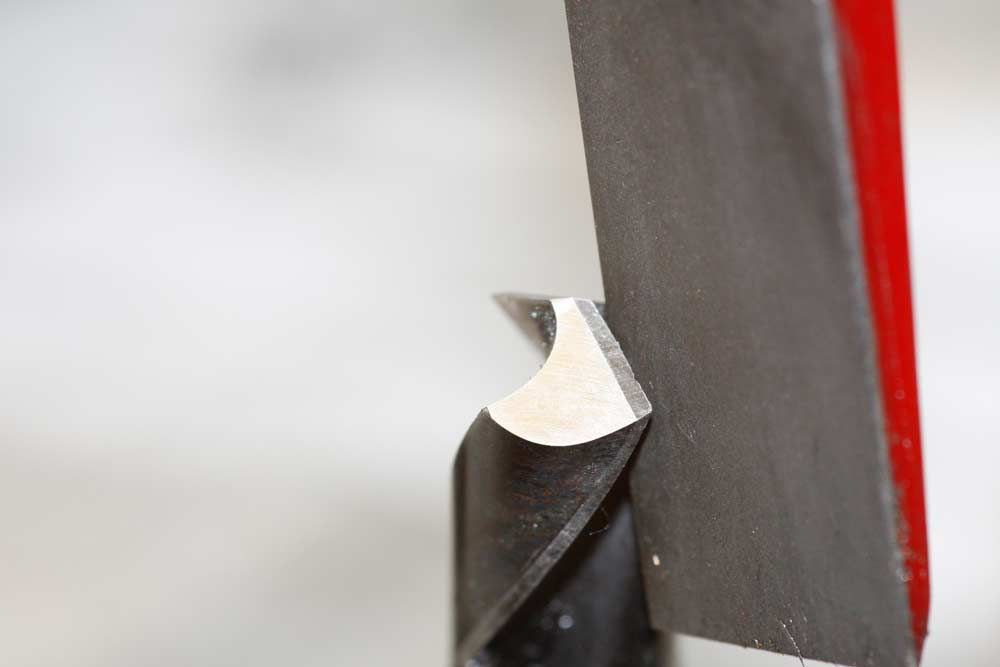Oh gosh Merrick my apologies, to you and all the other readers of this thread, the last thing I want is to be considered disengenuous – truly.

I was merely trying to point out that I had had a Tand C for so long without using it. I do however take your point regarding the work situation. However what I was trying to say was the same as Jeff – there simply isn’t the need to have one in order to pursue the hobby.
Believe me I’m not disputing their use or usefulness, but let’s face it before the Quorn came along there wasn’t much the amateur could turn to. The Quorn of course helped change that immensely and the Stent and other shall we say ‘less advanced’ ‘grinders’ even more so. As with most things it comes down to ‘money and choice’ – horses for courses etc so again I would suggest perhaps we have to agree to differ, and let this point be dropped now and turn more to the thread.
You say “we have solved the boring question” but you also state – you find it difficult to avoid chatter ( I guess you mean when boring) so that in itself provides an issue to discuss.
Several factors can contribute to this annoying situation and it’s something that needs to be got to grips with before that final cut as I’m sure you will appreciate only too well. Normally a reduction in speed and /or an increase in feed will do the trick, but it’s best to find and eradicate the cause if possible. Normally the culprit is a tool that’s rubbing – probably on a bar perhaps a bit slender for the bore length when sometimes a big blob of plasticene stuck on the bar will absorb any minute vibrations set up – more ringing than chatter but still enough to wreck a finish (providing theres enough bar to hang it on that is but then if so it’s best to get that as short as possible to begin with anyway). Normally though if reduction in speed is not the answer then a good look at the cutting area is called for.
Dare I say it? ……… Carbide (tipped) tooling does seem to be more prone to this than HSS. However I’m quite certain this is normally down to the fact that carbide prefers to ‘be worked’ at those higher speeds and feeds, something that can be a bit unnerving when you can’t see what’s going on. As a matter of interest has anyone got the recommended speed /feed/depth of cut for an SCLCR tipped boring tool for say CI and Mild steel?
Boring between centres gives a very satisfactory outcome. It does take a little more to set up than whipping the job in a 4 jaw but not horrendously so. It will give a very parallel bore though and where it really scores is if you have two bores side by side that need to be parallel to each other. I made my first bar to do the Quorn ‘feet’ and have used the technique for most bores, including singles since. The job does need packing to the correct height though a vertical slide is a big bonus if you have one.
Achieving the correct bore dimension is not difficult either. There are ‘attachments’ that allow the cut to be put on but then have to be removed. Perhaps you will be interested in my set up.
Firstly a small flat is milled on the bar then the hole for the bit is drilled/reamed opposite this stopping just short of the flat. The flat is then drilled thru preferably 40tpi though mine are just a simple BA. A hole for the clamping screw is tapped in the side.
The distance across the bar at the flat is measured, the radius of the bar subtracted and the result stamped/marked on the bar. The bore size is the distance across the flat to the cutter tip less the marked distance multiplied twice. The cut is put on by slacking the holding screw to just nip the cutter and, in my case, using the BA screw which, depending on clearance, can be left insitu or removed. It’s surprising how fine this can be advanced like this. It can be very accurate if you need it to but of course most times it’s for a piston which can be made to suit if it sneaks oversize a bit.
On the first cut of a rough bore the bar does spring a bit and can look a bit ‘wobbly’ as it goes through but as soon as any eccentricity is taken out it settles down and produces very good bores indeed and yes I’m afraid to say it but you are better off with a round nose cutter preferably with a 45 degree-ish approach angle – but how you sharpen it I’ll leave very much to you to decide

Heres a couple of pics of the larger bars and the op on the McOnie cylinder


I guess it’s fair to say that I’m not a ‘carbide devotee’ though they have been used on the odd occasion (at home) but it is interesting to hear Ians success with his method of making bars. I have a old saw blade though no green grit wheel at present but I shall give it a go – who kno
 Ramon Wilson.
Ramon Wilson.






